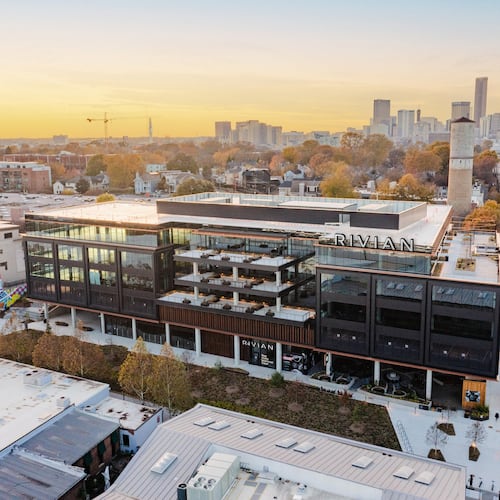ART REVIEW
“The New South: Juried Works on Paper Art Exhibition”
Through May 14. Noon-6 p.m. Wednesdays-Fridays; noon-5 p.m. Saturdays. Free. Kai Lin Art, 999 Brady Ave., Suite 7, Atlanta. 404-408-4248, www.kailinart.com.
Bottom line: Too much work, too many artists, but some hidden gems in the mix in this show loosely concerned with Southern themes.
How you feel about enormous group shows may depend upon your relationship to the artists involved.
The participating artists (and friends and family) will surely see their inclusion in the Kai Lin Art show “The New South: Juried Works on Paper Art Exhibition” as a boon. Kai Lin Art had 400 in attendance for the opening night of a show that features more than 80 artworks and more than 60 artists selected by gallery owner Yu-Kai Lin, SCAD dean Dale Clifford and artist Jason Kofke (who is also represented by Kai Lin Art).
For the rest of us, it can be a head-spinning case of visual overload where good and bad work rubs elbows and the great work gets lost in the fray.
Without a strong organizing principle beyond the tenuous relationship of the assembled artists to the South (some live in the South, others come from as far away as Sweden), the show’s objective of “exploring the contemporary Southern experience” occurs with varying degrees of success.
There is some extraordinary work in the mix despite the fact that it is often harder to linger over and appreciate individual successes with so much work to wade through.
I was especially smitten by Michelle Martin’s gorgeously old-world prints that look like illustrations from a 19th-century novel by some literary fabulist like Jules Verne or L. Frank Baum. Bird-women in Victorian dresses attend, like avian doctors, to a bedridden woman in “Infirmity,” and in “Passage” an island of earth carrying a small home floats in the sky like a hot air balloon. Martin’s works are whimsical, otherworldly and capable of transporting you to another reality.
The works find their dreamy kin in Thomas Turner’s “Above and Beyond” illustration in acrylic and paper featuring a crane flying through the sky toting a hatching egg sprouting a blossoming cherry tree in a meditation on new life.
Equally moody, but far more minimalist, Donald Robson’s pair of smudged gray watercolors “Woman With Suitcase” and “Citizen” of lonely people isolated against a field of white are as evocative and evanescent as a memory.
Wesley Terpstra also uses watercolor in his duet of pieces from “Collected Series” featuring delicate images of a matchbook and an image of a horse that suggests beloved mementos captured under glass.
Another real standout, with a very different attitude, are Fabian Williams' ribald, off-kilter and beautifully rendered parodies of politics and entertainment. Williams' work was a standout in another enormous group show, the High Museum's 2015 drawing exhibition "Sprawl." And he's notable here too, even if one of his pieces, "The Great Debate," a ribald, incisive election-year critique of the presidential race with drawings of the candidates — Clinton, Sanders, Cruz and Trump, among others — as two-headed beasts with multiple identities garners some not-great real estate near the gallery's bathroom.
Also worth seeking out: Williams’ feisty “Mammy and Madea,” which mashes up a cartoon hausfrau figure with director and actor Tyler Perry’s outlandish, larger-than-life Madea persona.
There are merits to group shows like this one, without a strong overarching theme: They give a sense of some of the ideas and techniques that currently have artists in thrall. Race is one recurring theme in works like Carl Janes’ funny ink on paper piece “The Forefather of Soul,” featuring 16th President Abraham Lincoln sporting a Black Power afro, or in Jamaal Barber’s poignant mixed media works “Same Song, Different Day,” of two generations of black men: in one image, a field hand with a sack slung over his shoulder, and in the other, a modern urbanite in baseball cap and medallion. The artist’s insinuation is that perhaps not very much has changed despite the decades that separate them.
About the Author
Keep Reading
The Latest
Featured

